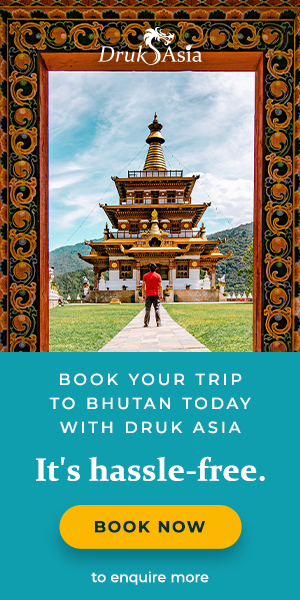Passion and Purpose: From Eastern Bhutan to the World’s Toughest Trek
Discover the inspiring journey of Yeshi Dorji, a Bhutanese trekking guide who has conquered the world’s toughest trails while sharing the beauty of Bhutan with travellers.

Can you share a bit about your background and what inspired you to become a tour guide in Bhutan?
My name is Yeshi Dorji, and I come from Mongar in eastern Bhutan. My journey into guiding began quite unexpectedly. I first joined a trek as a supporting staff member with Druk Asia, and during that trip, one of the guests encouraged me to pursue a guide course. Their belief in me gave me the courage to take that step, and from then on I was inspired to follow this path. Becoming a guide has not only allowed me to share the beauty of my country but has also deepened my knowledge of Bhutan’s history, culture, flora and fauna.

What was your very first trek as a guide like?
My first trek as a guide was in 2016 on the Laya–Gasa trek with two French guests. It was a 14 days, 13 nights adventure, often considered half of the legendary Snowman Trek. It was both exciting and humbling—an unforgettable introduction to guiding.
What’s the most challenging trek you’ve guided?
The Snowman Trek in 2017 was by far the most challenging. Lasting 30 days and 29 nights, we encountered heavy snowfall, and many guests struggled with the altitude and walking through deep snow. Even our horses and ponies faced difficulties crossing the high passes. It was a true test of endurance and resilience for everyone involved.

What time of year would you personally recommend for the best trekking experience?
I would recommend autumn as the best trekking season in Bhutan. The skies are clear, the mountain views are spectacular, and the landscapes come alive with vibrant colours. During this time, trekkers also have a good chance of spotting wildlife such as blue sheep, yaks, and Himalayan griffons.
What are some unique wildlife that you have spotted while trekking?
One of my most memorable sightings was during the Jomolhari Trek in March 2017, when I spotted a snow leopard near Tshophu Lake at 4,350m. Its beauty and elusive presence made it a once-in-a-lifetime encounter.
What’s your favourite trekking route in Bhutan, and why?
The Jomolhari Trek is my personal favourite. It offers stunning views of Bhutan’s mountain ranges, including Mount Jomolhari and Mount Jichu Drake, capped in snow. Along the way, you also encounter diverse wildlife such as blue sheep, marmots, and rare birds, making it a truly enriching experience.

Have you ever had to deal with altitude sickness or an emergency on a trek?
Yes, in 2017 during the Laya–Gasa trek, one of my guests developed altitude sickness after crossing Nyele La Pass (3,890m). We had to end the trek and arrange for a helicopter rescue to Paro Hospital. The guest was later admitted for further monitoring and treatment and recovered.
What’s your favourite memory from guiding?
In 2018, during the Soi–Yaksa Trek, we were caught in heavy snowfall. The conditions were difficult, and many other groups could not continue. But with teamwork and determination, we managed to cross the passes and complete the trek. Despite the challenges, the experience was filled with laughter and unforgettable moments.

What’s a typical Bhutanese meal during a trek?
A typical trekking meal would be rice served with ema datshi (our famous chilli and cheese dish) and sikam, which is dried pork. It’s simple, hearty, and full of flavour—just what trekkers need after a long day.
What has been your proudest achievement as a guide so far?
The Snowman Trek is one of the toughest treks in the world, stretching across some of Bhutan’s highest and most remote passes. In 2024, I successfully led a group of 15 trekkers. It was challenging to manage different paces, fitness levels and physical conditions along the way, but we completed the trek without major setbacks. It was one of my proudest achievements as a guide.

What are some of your personal hobbies outside of guiding?
Outside of guiding, I actually enjoy working with my hands on blue-collar jobs such as electrical work and masonry. I also like playing traditional Bhutanese games like darts and archery.
How can visitors truly appreciate Bhutan beyond just sightseeing?
Visitors who truly connect with Bhutan often appreciate our philosophy of Gross National Happiness, the uniqueness of our cultural heritage, and our national dress—gho and kira. These traditions reflect the deeper values of our country and offer insights far beyond what the eye can see.
What’s one piece of advice you’d give someone considering a trip to Bhutan?
If you’re an adventure seeker, I’d encourage you to take on the Snowman Trek. It’s one of the toughest treks in the world, but the rewards are unmatched—breathtaking mountain vistas, serene landscapes, and a profound sense of peace that only Bhutan can offer. Completing it will leave you with not just memories, but a deep sense of achievement.

--
This interview is part of the Passion and Purpose series where we shine a spotlight on the extraordinary individuals shaping Bhutan’s industries and communities across the different industries. Each feature explores the unique journeys, challenges, and achievements of Bhutanese professionals across diverse fields—tourism, arts, entrepreneurship, and more. Through heartfelt stories, we uncover what fuels their dedication and how they contribute to preserving Bhutan’s heritage, sustainability, and Gross National Happiness ethos.





